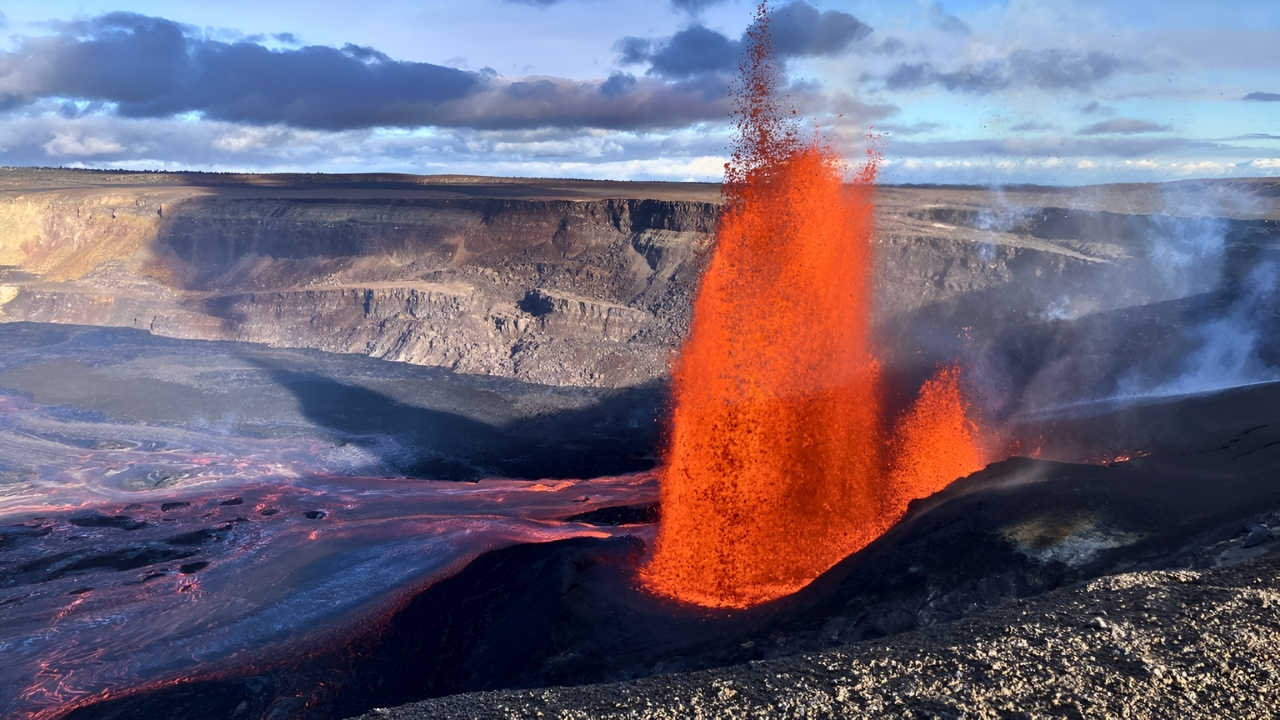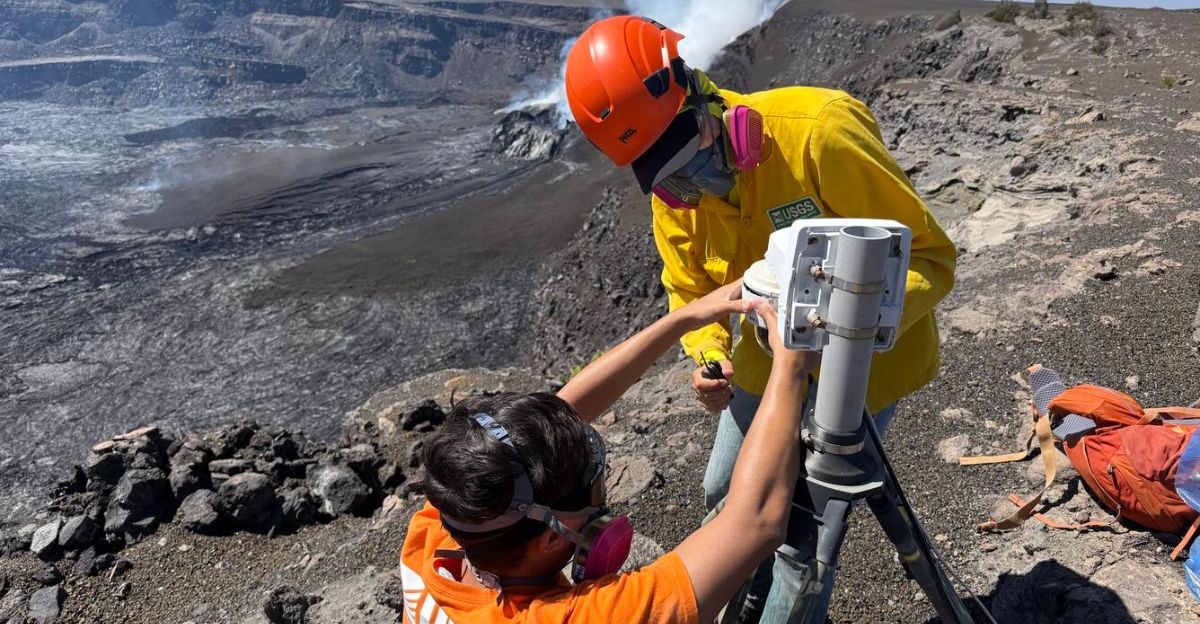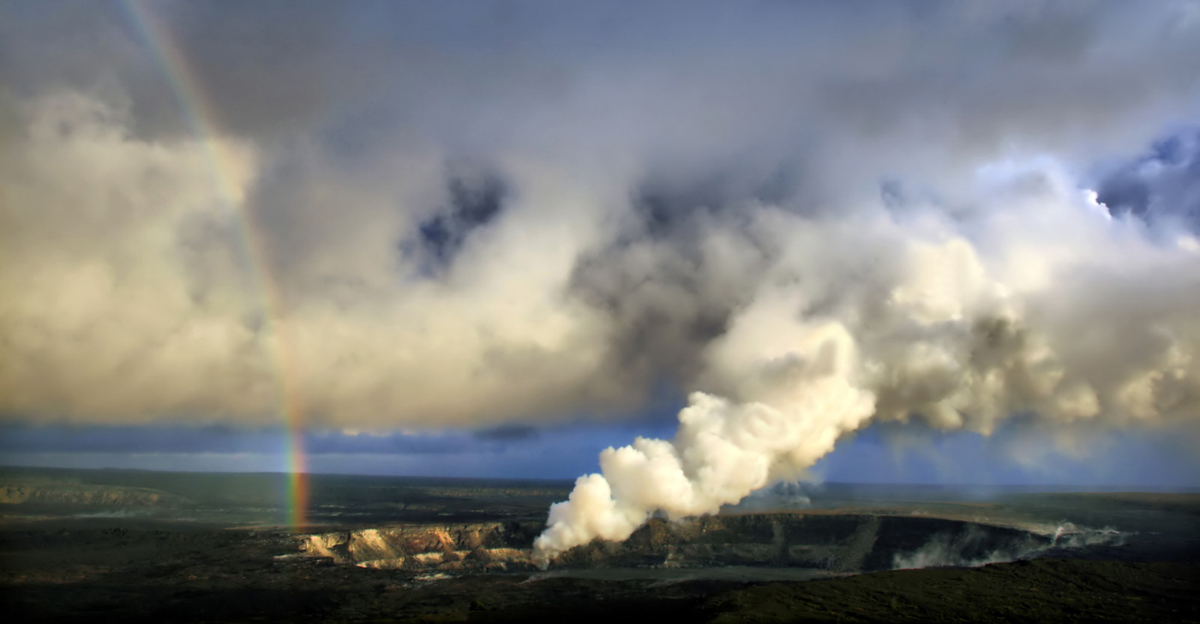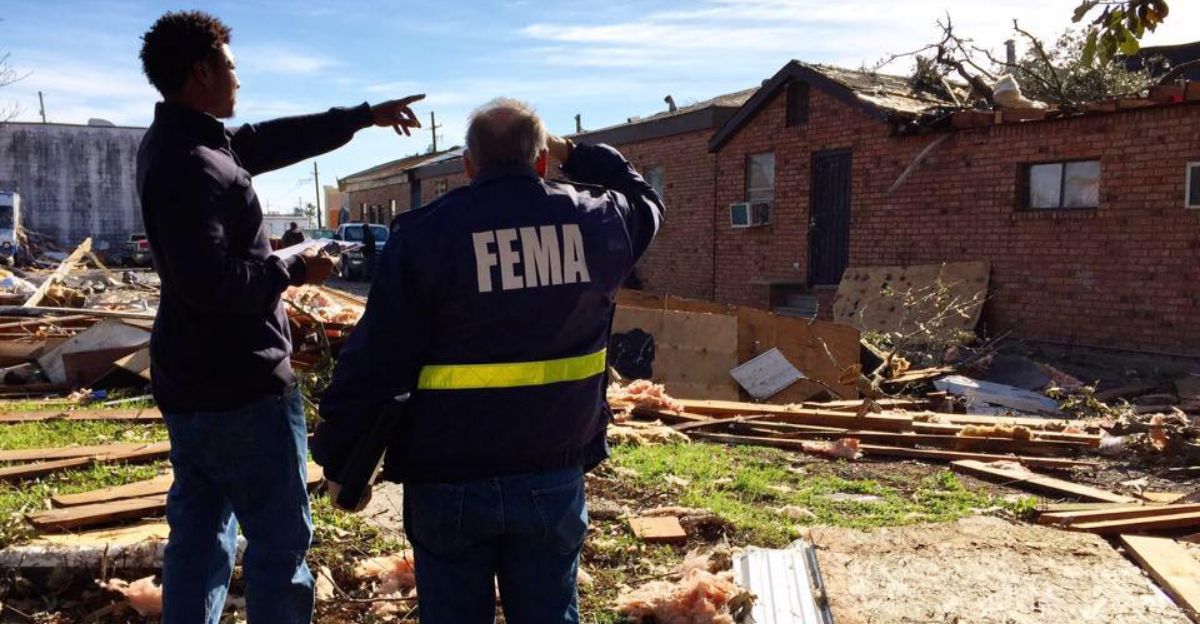
Thousands of people living on and visiting the Big Island of Hawai’i are getting ready for what could soon be a major volcanic eruption. The U.S. Geological Survey (USGS) has raised Kilauea’s alert level to Code Orange. This level means that an eruption is expected soon, possibly within days. Scientists say that if it happens, fountains of lava could shoot as high as 1,500 feet into the air. That’s taller than the Empire State Building in New York City.
According to the USGS, the possible eruption window lasts through November 28. That means this is not a distant threat but something that could happen at any moment. For people living near Kilauea, the risk has never felt more real. Officials are advising everyone in the area to stay alert, keep updated with emergency announcements, and make sure they know where to go if an evacuation order is issued.
Signs That Kilauea Is Becoming Active Again

Equipment placed around Kilauea’s summit is showing clear signs of increased activity. One important tool, called a tiltmeter, measures tiny changes in the ground’s shape. Lately, these instruments have detected the surface slowly bulging upward. This rise suggests that magma, the molten rock under the ground, is gathering in chambers below the volcano.
Since last Friday, more than 70 small lava overflows have been recorded near the south vent area. Alongside these, scientists have detected stronger and more frequent earthquakes in the region. These quakes are caused by intense underground pressure as magma forces its way upward. The situation is unpredictable. Even a small change in underground conditions could trigger an eruption with little warning.
Emergency officials have asked residents to keep their evacuation kits ready and to make sure they can move quickly if the situation worsens. Local schools and community centers have also updated their safety plans.
The Pattern of Continuous Eruptions

Kilauea’s most recent eruption phase started in December 2024, and since then, the volcano has rarely rested. Over the past year, it has experienced nearly weekly explosions. What began as small bursts of lava and gas has turned into increasingly powerful events. The lava fountains in recent months have reached record heights, and each eruption leaves nearby communities with only short breaks before the next one begins.
This constant cycle of activity has taken a heavy toll on local life. Roads have been closed repeatedly due to lava and ash. Air quality has dropped during eruptions, forcing residents to wear masks indoors and limiting outdoor activities. For those who live on the volcano’s slopes, staying prepared has become both a physical and mental challenge. Many residents say that the uncertainty, never knowing when the next eruption will strike, is the hardest part.
Dangers Beyond the Lava Flow

The risks from Kilauea extend far beyond the glowing rivers of lava. One of the most concerning byproducts of eruptions is a type of fine volcanic fiber called Pele’s hair. These sharp glass-like strands are carried by the wind and can travel more than ten miles from the crater. They’re light enough to drift through the air but dangerous enough to damage skin and eyes. Highway 11 has already seen closures due to these fibers creating unsafe driving conditions.
Lava debris also burns vegetation and can destroy power lines, while volcanic gases such as sulfur dioxide mix with moisture in the air to create a thick haze called vog. This vog has blanketed wide areas, lowering visibility and irritating people’s eyes and lungs. Doctors across the island have issued warnings, especially for children, seniors, and residents with asthma or other breathing problems. To help those most at risk, the county has opened clean-air shelters where air filtration systems can reduce the harmful effects of vog.
Community Response and Ongoing Uncertainty

Government agencies at the state, county, and federal levels, including USGS and the Federal Emergency Management Agency (FEMA), are working closely together. They’ve verified evacuation routes, placed supplies in key locations, and reviewed response plans to ensure quick action when needed. Local volunteers and community groups have stepped up as well, organizing support services, distributing food and medical supplies, and offering counseling for those struggling with the emotional weight of living under constant threat.
Despite all the preparation and advanced technology, scientists admit that predicting exact eruption times remains impossible. As USGS volcanologist Dr. Janet Babb explained, “volcanoes don’t always play by the rules.” Hawai’i Volcanoes National Park remains closed, and areas near unstable ground have been blocked off to protect visitors from falling rocks and cracks.
For now, island residents live in a tense waiting period. Each day brings a mix of hope and anxiety as they watch for new signs from Kilauea. Whether the volcano erupts soon or remains quiet, this event will once again test the island’s preparedness and the strength of its communities. What happens in the coming days will depend as much on human readiness as on the raw power of the Earth itself.